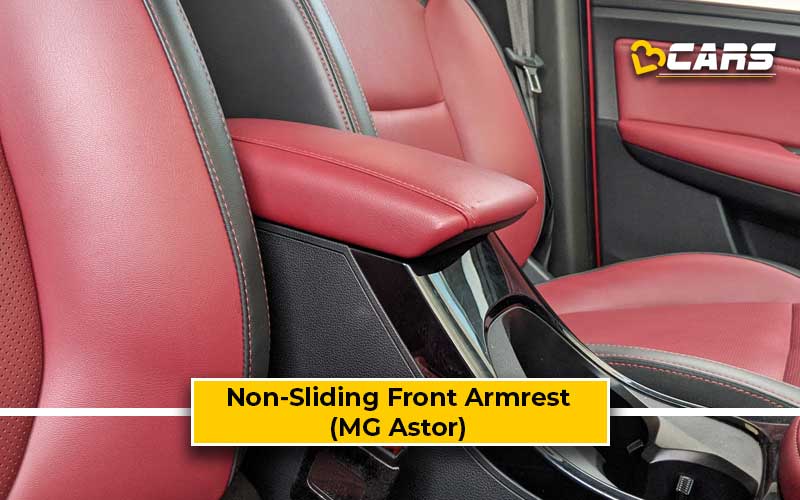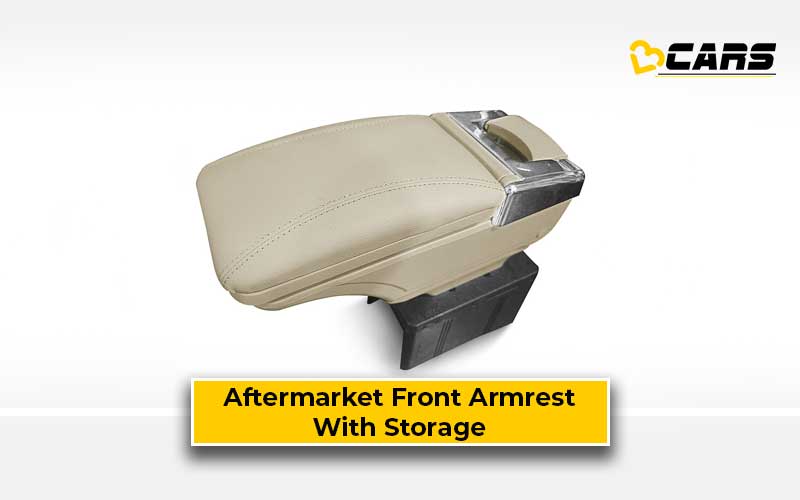What Is Front Armrest? Feature Explained
This comprehensive Feature Explained article delves into the world of front armrests, exploring their pros, cons, functionalities, costs, and suitability for various car owners.

What Is A Front Armrest?
The front armrest feature is fairly common these days in most mass-market cars. However, you can’t find it in cars smaller than the B2 segment. It offers a padded section where the driver can rest their arm during long journeys or while waiting at a traffic signal. If you drive a car with an automatic transmission, then you can also rest your left forearm on the armrest during short city drives. With the right design and in a car with short-throw shifters, you can even rest your forearm on the armrest and flick the gear lever into the desired slots moving just your wrists.
It improves driver comfort massively and if it has a storage bin, then it will also add to the in-cabin storage. You can use this cubby to store your phone’s charging cable, keys, wallet, loose change, parking and toll receipts, etc. The front armrest also creates a nice partition between the driver and the front passenger. Overall, it is good to have a well-designed front armrest in any car.
How Does A Front Armrest Work?
There are several different types of front armrests on the market today. Some are downright basic. For example, my Ford EcoSport has a basic, fixed armrest and it can swing up or down when needed. Front armrests in some cars have the sliding feature, which provides extra support for your forearm. Without the sliding feature, some cars’ armrests work more like elbow rests and don’t offer enough support.
Then, there are centre console-mounted armrests in popular cars such as the Hyundai Creta and Kia Seltos. These armrests are wide enough for the driver and front passenger to share. They also provide a large storage area underneath the cushioned top lid along with features like USB ports and a 12V power socket. Some even house the AUX input for the stereo inside the front armrest cubby hole.
Finally, there are very luxurious front armrests draped in thick leather, like in cars from Audi, BMW, and Mercedes-Benz. These armrests are softer and offer more than adequate cushioning. They often have two doors for access to the storage binnacle underneath. Two lids for the storage bin let the passenger access it without asking the driver to lift their arm.
Most generic aftermarket front armrests found at car dealers and online stores mount onto the centre console with nuts and bolts. Such a system requires you to drill holes into the centre console, which may impact the car’s residual. These front armrests are typically made from cheap materials and do not last very long. They can also introduce unpleasant squeaks and rattles into the cabin. If you buy a front armrest from the aftermarket, make sure it has a felt lining inside the storage area to prevent your keys and loose change from rattling. If it does not have a felt lining, you could buy the material, lay it down, and glue it down yourselves.
Types Of Front Armrests
Front armrests, common in most modern cars, are padded sections designed to provide comfort for the driver's arm during long journeys or while waiting at traffic signals. They offer various functionalities depending on the type and design:
- Basic armrests: These fixed armrests, like the one in the Ford EcoSport, can be swung up or down for convenience.
- Sliding armrests: These offer adjustable support for the forearm by allowing it to slide forward and back.
- Centre console armrests: Found in cars like the Hyundai Creta, these wider armrests offer shared use between the driver and passenger, often featuring storage compartments, USB ports, and power sockets.
- Luxury armrests: Premium cars like Audis or BMWs boast luxurious armrests with plush leather, ample cushioning, and dual storage compartments for individual access.
What Are The Pros Or Advantages Of Front Armrests?
- Enhanced driver comfort: Front armrests significantly improve comfort, especially on long journeys, by providing a place to rest your arm.
- Additional storage: Armrests with built-in compartments offer valuable storage space for items like phones, wallets, or loose change.
- Improved organisation: They create a physical partition between the driver and passenger, potentially enhancing cabin organisation.
- Convenience for automatic transmission cars: In automatic vehicles, armrests offer a comfortable resting place for the left arm during short drives.
What Are The Cons Or Drawbacks Of Front Armrests?
- Potential for reduced handbrake accessibility: Some generic aftermarket armrests might limit access to the handbrake lever.
- Noise concerns: Non-felt lined armrests can create rattling noises from loose objects stored within.
- Ergonomic limitations: Some OEM armrests might lack proper cushioning or ergonomic design, compromising comfort.
- Cost considerations: OEM-spec aftermarket armrests can be expensive compared to generic options.
Aftermarket Vs. Factory-Installed Armrests:
While aftermarket options offer affordability, they come with several drawbacks:
- Material quality: Generic armrests often use cheap materials that may not be durable or comfortable.
- Installation complexities: Installing them might involve drilling into the center console, potentially impacting resale value.
- Noise and rattles: Poor-quality materials can introduce unpleasant noises in the cabin.
Factory-installed armrests, although costlier, offer several advantages:
- Superior quality: They use better materials for comfort, durability, and noise reduction.
- Seamless integration: They blend seamlessly with the car's interior design and functionality.
- Professional installation: Authorised service centres offer professional installation, ensuring proper functioning and safety.
Cost Considerations
- OEM-spec armrests: Prices range from Rs. 2,000 to Rs. 6,000 for mass-market cars and can reach Rs. 60,000 for luxury cars.
- Aftermarket armrests: Generic options cost between Rs. 800 and Rs. 2,000, but quality and durability vary significantly.
Repair and Replacement Costs Of Front Armrest
Replacing a damaged armrest is generally inexpensive. OEM-spec replacements cost between Rs. 2,000 and Rs. 6,000, while repairs at local workshops might be cheaper but could compromise quality.
Verdict
For B2 segment cars and above, we highly recommend having a front armrest. They significantly enhance driver comfort and offer valuable functionalities. However, avoid cheap aftermarket options due to their potential drawbacks. Opt for factory-installed armrests or high-quality aftermarket alternatives for a positive experience. Consider factors like the car's segment, your budget, and comfort preferences when making your decision.
Note: Check your Car EMI with our - Car Loan EMI Calculator
You can use our Fuel Cost Calculator to see how much any petrol, diesel or CNG car will cost to run based on the latest fuel price in your city.





0 Comments